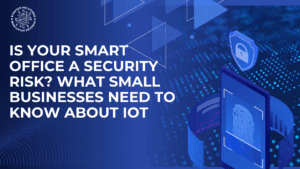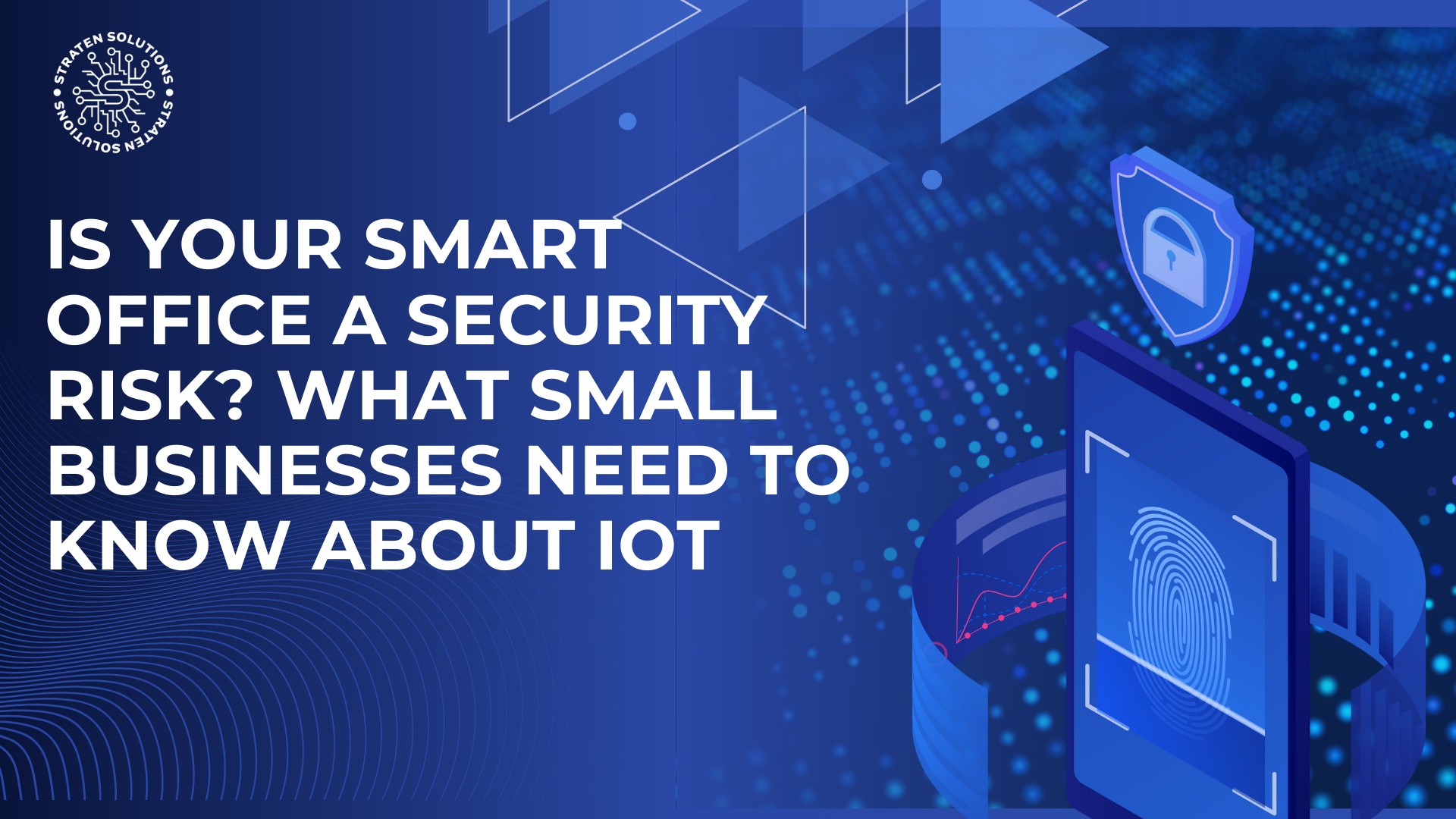
Your office thermostat, conference room speaker, and smart badge reader are all great for convenience, but for small businesses, they can also become entry points into your network. With more connected devices in use than ever before, staying on top of everything can be a real challenge. And it only takes one vulnerability to compromise your entire system.
That’s why having smart IT solutions is more critical than ever. A trusted IT partner can help you connect smart devices securely, protect your data, and manage your entire tech environment with ease.
This practical guide is built specifically for small teams preparing to adopt connected technology.
What is IoT?
The Internet of Things (IoT) refers to physical devices such as sensors, appliances, gadgets, and machines being connected to the internet. These smart devices can gather and share data and often operate independently without constant human oversight. IoT technology helps streamline operations, automate processes, and deliver valuable insights that support better decision-making for both businesses and individuals. However, it also introduces challenges, including data security risks, privacy concerns, and the complexity of managing a growing network of connected devices.
Steps To Manage IoT Security Risks for Small Businesses

1. Know What You’ve Got
Start by identifying all the smart devices connected to your network things like cameras, speakers, printers, and thermostats. You can’t protect what you don’t know exists.
Take a walk through your office and make note of every device.
Document the model names and who uses each one.
Having a complete inventory gives you the visibility needed to stay in control, whether you’re applying updates or troubleshooting issues.
2. Change Default Passwords Immediately
Many smart devices ship with default or easily guessable passwords—and if you’re still using them, you’re leaving your network wide open.
Make sure to:
Change every password to something strong and unique
Store them securely in a place your team can access when needed
It only takes a few minutes, but it helps you avoid one of the most common beginner mistakes: relying on weak or default passwords.
3. Segment Your Network
It’s fine for your smart printer to connect but it shouldn’t have access to everything on your network. Network segmentation helps isolate IoT devices, protecting your core systems from unnecessary risk.
Here’s how to do it:
Set up separate Wi-Fi networks or VLANs specifically for IoT devices
Restrict IoT access to sensitive systems or servers
Use guest networks whenever possible
By segmenting your network, you reduce potential threats and make it easier to monitor device activity.
4. Keep Firmware and Software Updated
Security vulnerabilities are constantly being discovered—and updates are what fix them. If your smart devices aren’t up to date, you’re leaving the door open for cyberattacks.
Here’s what to do:
Check for firmware and software updates at least once a month
Enable automatic updates whenever possible
Replace any devices that no longer receive support or patches
Even older devices can stay secure, as long as they’re still getting regular updates.
5. Monitor Traffic and Logs
After your devices are set up, keep an eye on their behavior. Unusual activity can be an early warning sign of a problem.
Here’s how to stay on top of it:
Use simple network tools to monitor how often devices connect and where they’re sending data
Set up alerts for suspicious behavior like a badge reader trying to access the internet
Regularly review logs for unusual patterns or spikes in activity
You don’t need a full security team, just a consistent routine, even something as simple as a daily or nightly check-in.
6. Set Up a Response Plan
Issues are bound to happen as devices can fail, glitch, or behave unpredictably. Without a plan in place, even small problems can become big disruptions.
Make sure your response plan covers:
Who to contact when a device starts acting up
Steps to isolate or disconnect a suspicious device
Backup tools, firmware, or replacement devices you can quickly switch to
A solid response plan helps you act fast and stay in control when things go off track.
7. Limit What Each Device Can Do
Not all devices need full access to your network. The secret to better security is smart permission control.
Here’s how to tighten things up:
Disable unused features and remote access options
Block internet access for devices that don’t require it
Limit each device’s functions to only what’s necessary
The less access a device has, the lower the risk while still allowing it to perform its intended job.
8. Watch for Devices That Creep In
It’s tempting to add new devices like smart coffee makers or guest speakers without considering the security risks they bring.
To stay protected:
Set up a simple approval process for adding any new device
Ask key questions: Does it really need access to the office Wi-Fi? Does it collect or store data?
Block or reject any device that can’t be properly secured
Identifying potential risks early helps keep your network safe and resilient.
9. Encrypt Sensitive Data
If your smart devices transmit data, ensure that data is encrypted both during transmission and while stored.
Check device settings for encryption options
Use encrypted storage systems on your network
Encryption adds a layer of protection without slowing things down.
10. Reevaluate Regularly
It’s common to secure your office tech once and assume it will stay safe—but technology evolves quickly, and so do the threats.
Make it a habit to:
Conduct a thorough review every six months
Reevaluate passwords, network segmentation, and device firmware
Replace any devices that no longer meet current security standards
By sticking to a regular maintenance schedule, you stay ahead of risks without the stress of constant monitoring.
Why This Actually Matters
Smart devices make work easier but can also introduce security risks if not properly protected. More businesses are facing cyberattacks through their IoT devices than ever before, and these threats are increasing quickly. Safeguarding your systems doesn’t require costly, high-tech tools, it starts with straightforward, smart actions like updating passwords, keeping devices current, and knowing exactly what’s connected to your network.
These easy steps can keep your business safe without disrupting your workflow. And with the right IT support, staying ahead of threats is simpler than you might think.
Your Office Is Smart, Your Security Should Be Too
You don’t need to be a cybersecurity expert to keep your small office safe. As more smart devices like printers, thermostats, and security cameras connect to your network, hackers find more chances to break in. The good news? Protecting your space doesn’t have to be complicated or expensive.
With a team that protects small offices without the big-business complexity, you can take straightforward steps to safeguard what matters most. Ready to get serious about IoT security? Contact us today and partner with experts who understand your unique needs.






